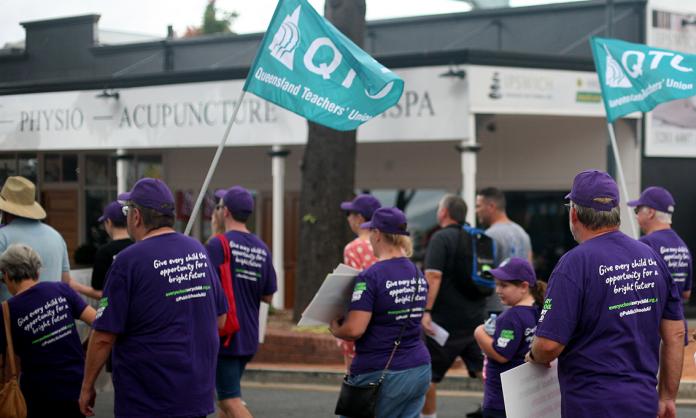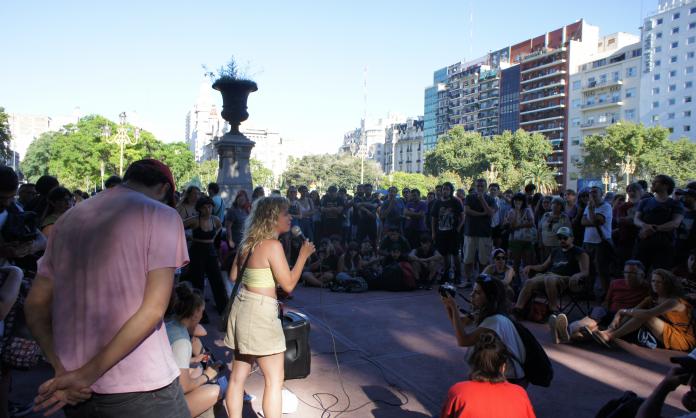Queensland teachers are facing a crisis in their profession. Staff shortages and excessive workloads—already long-standing issues before the pandemic—have dramatically worsened since 2019.
Curriculum changes and rewrites, the rollout of new online platforms and demands to collect excessive data on students are contributing to unbearably high workloads. Queensland teachers currently do more face-to-face teaching than the Australian average. For high school teachers, this works out to about an extra week per year, and for primary teachers, an extra two weeks. Countries known for having the best education systems, like Finland, do one-third less face-to-face teaching time on average. To bring face-to-face teaching time in Queensland into line even with the Australian average would be a significant step forward in reducing the overall workload for teachers.
Inadequate teacher pay is another significant problem. Nationally, teaching pay is, on average, 16 percent behind similarly qualified professions, according to the Grattan Institute. Under their current agreement, Queensland teachers are due a rise in base pay of just 11 percent over three years, topped up by annual cost-of-living allowances. Because, however, the cost-of-living allowances are not integrated into base pay, at the expiry of the agreement, teachers’ pay will have fallen considerably behind inflation.
Poor pay and heavy workloads are driving staff attrition as many experienced teachers retire early, and early and middle-career teachers quit after just a few years’ service. Research commissioned by the Queensland College of Teachers in 2019 found that one in six teachers leave the profession within four years. Current attrition rates are likely worse, as the pandemic has exacerbated the crisis. From 2021 to 2022, for example, state-wide teaching vacancies increased by 38 percent. In the regions, the shortage is more acute, with vacancies spiking six-fold in Queensland's North Coast.
High turnover results in an even greater strain on those who remain in schools. The outcome is classes being amalgamated, staff in management roles covering classes, teachers taking on classes outside their subject areas and teachers being pulled out of retirement.
All of this has an effect on students. Less planning time, burnt-out teachers, and a general lack of resources all place limitations on the quality of education available to students. Recent NAPLAN results demonstrate the impact: Queensland students perform the worst out of any mainland state by national writing, reading and mathematics standards.
The solution to the crisis in teaching and in Queensland’s schools is simple: lift teachers’ pay, increase school funding, and reduce workloads. These are needed to reward existing staff appropriately and encourage teachers to return to the classroom. They will also ensure a better education for students, as teaching conditions inevitably shape learning conditions.
The Education Department is refusing to introduce the kind of measures needed to alleviate the crisis. It prefers cheap, short-term fixes. Programs like Permission to Teach, where pre-service teachers still completing their studies are placed in the classroom, are being relied on as a band-aid solution to the shortage. By the end of this year, there will be about 1,000 of these student-teachers in classrooms, almost eight times more than five years ago. If first-year, qualified teachers are overwhelmed by the excessive workload, entering the profession before being qualified is likely to be even more stressful. Far from addressing the problems at the root of the crisis, the Education Department is pushing the burden onto students, which risks burning them out more quickly.
There is no shortage of money to fund public schools and higher teacher pay. The state budget is $12 billion in surplus. The government is spending $2.7 billion to rebuild the Gabba sports stadium and is continuing to subsidise private schools and the fossil fuel industry to the tune of hundreds of millions of dollars. The problem is the lack of political will to improve the lives of teachers.
We might expect the Palaszczuk government to be tight-fisted with teachers, as it is with every other group of public sector workers. The main problem is that the leadership of our union, the Queensland Teachers Union, refuses to fight for more. Union president Cresta Richardson told members that the current enterprise agreement was a “sensible offer by the government”, and the union leadership refused to consider strike action to demand more.
There is no reason why Queensland teachers could not win a pay offer above inflation. After waging an industrial campaign, New South Wales teachers won a 10 percent pay rise for the first year of their new agreement. While the settlement could have been won sooner if the New South Wales Teachers Federation hadn't put the campaign on ice as the Minns Labor government came into power, it still shows that significant wage rises are possible if unions are prepared to fight.
Queensland teachers have been voting in significant numbers for years for a fight back, but the union leadership has held back rank-and-file sentiment, being too concerned with not embarrassing the Palaszczuk Labor government.
Teachers fulfil an integral role in society, and their pay and conditions should reflect this. But without a union prepared to fight the Palaszczuk state government and win a better deal for teachers, the crisis is only likely to become more severe.










